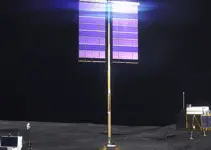Two Canadian tech firms have announced that they each independently recreated the ArriveCan app over the Thanksgiving weekend to illustrate that Ottawa should not have paid anywhere near $54-million on the mobile software.
Canada’s tech community reacted with outrage after The Globe and Mail reported last week that total spending on creating and maintaining the ArriveCan app is on pace to exceed $54-million this year, which is more than double what the government had recently said was spent.
Lazer Technologies and TribalScale, which produce apps for large corporate clients, said last Friday that their teams were going to hold voluntary weekend hackathons to illustrate that ArriveCan could have been made cheaply and quickly.
Both have since announced that their hackathons successfully reproduced clones of the app. Lazer has posted its code online, as well as a video and written explanation that describes what the clone app does and how it compares with the government’s ArriveCan app.
“Having built over 100 different apps at Lazer for some of the most exciting companies in the world, it was shocking for us to see the total amount of capital that was spent to design, create, launch and maintain the ArriveCan app,” said Lazer co-founder Zain Manji in an online post.
Building such crucial technology with many different stakeholders is “no easy task,” he added. “However, the true cost to implement this shouldn’t have been this high,” he said.
Lazer’s clone app was created by a single staff member over the Thanksgiving long weekend.
The company says unlike the government app, its clone does not include some elements such as automatic translation, integration with federal government backend systems, accessibility and complete testing.
“Of course we know that an app like ArriveCan cannot actually be taken from idea to release in a weekend,” said Mr. Manji, adding that he hopes this exercise will demonstrate the wealth of talent across Canada, which could help the government “achieve their goals at a more reasonable cost to taxpayers.”
ArriveCan was initially created as a way for travellers to upload mandatory health information related to COVID-19. It has since been expanded to allow users to answer customs and immigration questions. The app is no longer mandatory as of Sept. 30, but it continues as a voluntary option.
Richard Hyatt, CEO and founder of Canadian tech company Candr and a founding partner and fellow at the Rotman School of Management’s Creative Destruction Lab, reviewed Lazer’s ArriveCan clone app code at The Globe’s request.
“It looks great so far,” said Mr. Hyatt, who was not involved in the hackathon but was among the Canadian tech leaders who spoke out against the $54-million price tag. He said there would still be additional “heavy lifting” required for such an app to be ready to launch. “The front-end app is pretty straightforward,” he said. “There’s probably a lot of work required to secure and provide the correct integration into the other back-end systems.”
Sheetal Jaitly, CEO of TribalScale, which is the other company that recreated the ArriveCan app, had said the project was launched because his team was upset by what it perceived as wasteful government spending.
Like Lazer, TribalScale released a video of its clone app and is intending to publish its related code.
In a news release Tuesday, Mr. Jaitly said the project can be an opportunity for change. His company is aiming to team up with other tech leaders to form a group to provide free advisory resources for the federal government on digital policy. After calling for applications Tuesday morning, he said 17 companies had responded by mid-afternoon saying they would like to take part, including Lazer. The group will hold its first meeting Friday.
“We are forming this consortium of leaders in digital to be a free advisory resource for the Canadian government at all levels across the country on any digital questions now or in the future. Let’s bring capital efficiency and productivity to our digital ecosystem within the government,” he said.


